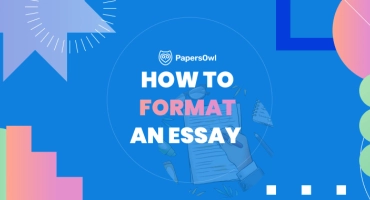How to Use “Et Al.” in a Sentence (with Style‑Guide Examples)
Table of contents
“Et al.” abbreviation originates from the Latin term known as “et alia”. It means “and others” and should be used in various source citations in writing.
The chances are high that you have already seen them in bibliographies or works cited pages. It helps us save valuable space when there are too many authors to have everyone named.
If the complexities of proper citation are too confusing or demanding, many students choose to seek assistance and ask experts to write my assignment rather than risk academic error.
This guide will help you learn how to use it in relevant writing styles without mistakes. You will see actual writing examples of in-text citations of academic writing where they are used.
Let’s learn how to use et al in a sentence!

Punctuation Rules and In-Text Citation
Before proceeding further with the et al meaning, let’s dive straight into the practical rules and helpful examples.
Basic Rules
- Et part is always written without a dot, while Al part comes with the dot, literally meaning “and others” when put together.
- When your “et al.” part appears at the end of the sentence, there is no need to put an additional dot there.
- The comma before “et al.” is placed only when you already have more than two names in your list. When you only have one name that follows with et al., no need to place a comma.
👉 According to the official guide by Purdue OWL, you should not be using cursive writing in your citations and in-text sources. The usual font will do just fine!
12 Short “Wrong/Right” Examples of Using Et Al.
Et. al or et al? See below!
- ❌ Wrong: Et. al. / etal./ et. al / et-al
- ✅ Correct: et al.
- ❌ Wrong: Smith, et al. (when you have one name)
- ✅ Correct: Smith et al.
- ❌ Wrong: … as shown by Jones et al..
- ✅ Correct: … as shown by Jones et al.
- ❌ Wrong: et al. in your citation written in cursive
- ✅ Correct: the usual font used for your writing style
When you have to cite multiple authors or cite references for a certain format, it is always good to take a look at academic citations and ensure that your reference list is accurate.
Examples of Using Et Al. in Writing
If you look at research papers in APA style or any other citation format, the chances are high that you will encounter in-text citations that will use et al at least once. As mentioned earlier, it always helps to see how different citation styles can be used in practice.
Let’s take a look at specific guidelines for each case:
In Parenthesis or Parenthetical Citing of Using Et al in a Sentence:
- 📝Recent studies confirm that it was the best solution (Simpson et al., 2025)
- 🔬According to the recent research done by CERN (Jones et al., 2021)
- 📊While it has not been confirmed to be efficient (Connor et al., 2001)
- 📉Statistical information sources show us that (Peck et al., 1996)
During Narrative Cases or Signal Phrase:
- 📚Jones et al. (2025) confirm that most applicants have been under pressure and biased towards popular trends.
- 📺 Smith et al. (2019) reported that a news system on TV has been sufficient to implement social media solutions.
- 💡Connor et al. (2020) argue that panic attacks occur only based on low cognitive skills.
- 🐾James et al. (2022) believe that most animal species in South America tend to repeat cultural trends of the local population.
The List of Names Citation:
- 🔑Smith, Jones, et al. have reported similar research results, leading us to believe that solar energy can be helpful.
- 🌱Petty, Campbell, et al. have confirmed the idea of researching pre-school children during playground conflicts as a way to seek similar patterns.
- 👮Emerson, Lake, et al. have reported unusual findings related to body cameras worn by police officers in Los Angeles as the discipline levels have increased.
- 🚀Hetfield, Ulrich, et al. have confirmed a theory of quantum relevance when exploring deeper space particles in vitro versus using artificial modelling.
At the End of a Sentence:
- 🔍Many factors have been noted in the previous research approach, as shown by Jones et al.
- 🧠It is still unclear whether it was the most efficient method of calculation since, as noted by Peck et al., using AI can cause hallucinations.
- 📈Prior research missed many elements, and as noted by Hetfield et al., there is a significant gap between the survey’s male and female participants.
- 🎓The benefits of homeschooling for autistic children are evident, yet social interaction is still crucial, as James et al. report.
In Footnotes / Endnotes (Chicago NB):
When using the Chicago Manual of Style for your essay or a research assignment, the Chicago style will implement the following. See these examples if your task is to compose a paper in Chicago style:
- Jones et al., Title of your research paper.
- Peck et al., Mind Management in a Business Environment.
- Hetfield et al., Pressure Correction in the Boeing Aircraft.
- Smith et al., Modulation Systems of Solar Panels in Academic Institutions.
These are the short notes, while the complete part of a citation will look like this:
| ➡️Jones et al., “The Welsh Culture”, 1134
➡️Jones et al., “The Welsh Culture and the Language of Children,” Journal of International Relations of the Commonwealth 198, no 14 (2021): 1134, www.jstor.org/stable/xxxxx/ ➡️van der Saar et al., “The Challenges of Keeping Customers”, 226. ➡️Hannes van der Saar, Pickles Andrew et al., “The Challenge of Keeping Customers Interested with Campaigns,” Journal of Marketing Research 55, no 3 (2024): 226, www.jstor.org/stable/xxxxxx/ |
Tip: Can I use et al. in a sentence? Sure! As you can see, it removes the need to list all the authors since the first author’s name is sufficient.
Still, here is another bit of Chicago-style knowledge that you must remember when dealing with footnotes:
You must list 2 authors in the full note, yet only one name will do for the short footnote. If you have more than two others, name only the first author, followed by “et al.” for all cases.
In the bibliography, you must list up to 6 authors. If there are more than six authors, list the first three followed by “et al.” addition.
What Does et al. Mean, and Why Do We Need It?
Before discussing other styles and determining whether to use MLA, APA, or Harvard style, let’s learn more about the famous Latin phrase.
As it has already been noted, this Latin abbreviation means “and others”. It is used for all academic styles because text citations often go beyond two authors. As we see from our examples on how to write et al., only one or two authors may be mentioned before the phrase comes in.
Of course, it will always depend on how many authors you have to list!
The main purpose of the “et al.” phrase is to shorten things and avoid repeating all names in your citation. It does not serve as a replacement for what is being said or written. It does not mean “et cetera”, just like “this work and so on” is also not about it.
The Difference Between Et Al. and Et Cetera
Et al. is only used to reference other people not specifically named in your list of citations. When you use “et cetera” or “etc.”, it is used when listing groups of nouns or adjectives.
For example: It was noted that it is not the best solution for marine monitoring of waters in San Francisco Bay, as confirmed by Jones et al.
The shop had many guitars ranging from acoustic and nylon-string models to electric, bass, fretless, bizarre shape guitars, v-styled, etc.
It must be noted that both abbreviations use lowercase letters and do not start with capital ones! The same rule applies to footnotes or your Works Cited list.
Should I Use Cursive?
No cursive or bold font is allowed unless you wish to mention “et al.” as a term (a word). It may be written in cursive if it is not used in a citation. It is even recommended that students use MLA style to avoid confusion.
As for APA style, the latest manual says that abbreviations should not be marked in cursive when you work with your citations.
How to Use Et Al. in Different Writing Styles?
Since we already know the basic rules and conventions, it is time to proceed with more examples of text citations with the last author or any other types of references. The core difference is that we shall narrow each reference in this article to a specific style.
Let’s start with in text citations first, and you will see that some differences are there.
| APA 7 In-text and Bibliography Citation Rules | MLA 9 | Chicago 17 | Chicago 18 | Make Sure to Verify |
| Always place the et al. part in in-text citations when you have more than three authors. | More than three authors require et al. in parentheses. If it is a narration, you can use “and colleagues” | Four or more authors require et al. for footnotes and endnotes. | If more than two authors, use et al in footnotes and endnotes. | Always check the publication date. |
| For a Bibliography page, when you have fewer than 20 authors, they are all listed. When you have 21+ authors, only the first 19 are listed, and the last one. | When you have the Works Cited page with 1-2 authors, you must list them all. Three or more authors require et al. part. | The bibliography and references list require a full listing of up to 10 authors. If more than 10 authors, list the first 7 and add et al. then. | List up to 6 authors in full. If you have more than 6 authors, list the first three and add et al. | Remember to shorten subsequent citations in Chicago style. |
When to Use et al in APA 7 Examples?
- Parenthetical: (Taylor et al., 2019)
- Narrative: Taylor et al. (2019)
Learning how to use et al in APA, remember that a reference list is:
(21+ authors): list the first 19 and the last one.
MLA 9 Examples
Speaking of MLA structure, we have the following:
- In‑text et al punctuation: (Moore et al. 37) / Moore and colleagues (37) state…
- Works Cited: Moore, Wilson R., et al. …
Chicago 17 and 18
- Chicago 17: It uses the “10/7” policy for your Bibliography page. Use et al. in your text with 4+ authors.
- Chicago 18 (newer): it uses the “6/3” policy.
An example that will work for both versions:
- John Norum et al., “Gender Roles on Social Media Among American Teenagers,” Journal of Children and Media 13, no 4 (2018): 159
- John Norum et al., “Gender Roles on Social Media”, 159.
Note that, unlike the Bibliography, the first author’s last name is reversed. No bullet point format changes are made otherwise. When referring to examples in footnotes and endnotes, start with the first and last names.
Special Cases and Frequent Issues
Sometimes you may run into various cases that require additional work and knowledge. Let’s take a look at the most popular cases:
Same First Author and Different Co-Authors
Add the following last names to the part about your et al. to avoid confusion. You can also add a short header, depending on whether your writing style allows that.
Anderson, Brown, et al., 2020; Anderson, Connor, et al., 2020, et Anderson, Duffy, et al., 2020.
Group Authors and Organizations
Here is an example:
In a recent research study, the Organization for Economic Co-operation and Development [OECD] (2009) discovered that…
…was discovered (Organization for Economic Co-operation and Development [OECD], 2009).
Subsequent use:
A recent OECD (2009) report suggested that…
OR
…in basic labor situations (OECD, 2009).
Never Use et al. for a Single Person
Do not use it for a single person, as it is not meant to replace a single author. Note that it is plural — “others”. What does et al. mean? It means you only use it when there is more than one “other”.
Quick Checklist Before You Submit Your Assignment
Let’s sum things up and take a quick look at what you must remember:
- Check the number of authors for your style and citation.
- Check the rules of your specified style in a grading rubric.
- Make sure that you verify whether an et al. part is necessary.
- Check your punctuation with the dot after et al. and the comma before when you have more than two authors.
- The examples that you specify follow a specified style.
- If you use the Chicago style, specify whether you use the 17th or 18th edition.
Useful Additions to Consider
In addition to checking your spelling (avoid et alii mistake), let’s see Harvard and Vancouver citation rules. Here are some examples to start with:
Harvard Style
When using the Harvard style citation, your source must have three or more authors to use et al. The first author’s name must be given, followed by the “et al.” part.
For example: It was discovered that children who spend more time outside are more resistant to germs (Jackson et al., 2022)
Vancouver Style
Vancouver requires references with three or more authors. In such a case, the first author’s family name is followed by the “et al.” part with a year of publication. Groups of references should be listed in ABC style first, then by the year of publication.
For example: A recent study (Alban et al., 2009) shows that many aspects of previous research were…







